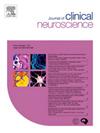Lessons from a web-based referral system for acute neurosurgical referrals. Part 1: System features and evaluation
IF 1.9
4区 医学
Q3 CLINICAL NEUROLOGY
引用次数: 0
Abstract
Background
The implementation of electronic referral systems in healthcare has streamlined communication between referrers and specialists, improving efficiency and documentation. Such systems can optimise patient care and reduce the burden on medical staff. This study reports on the development, implementation, and evaluation of the “Hospital Emergency Neurosurgical Referral Interface” (HENRI), a bespoke web-based referral system introduced at the Royal Brisbane and Women’s Hospital (RBWH).
Methods
HENRI was developed by integrating with existing hospital systems for patient data retrieval. It was gradually implemented, and mandatory use was introduced in 2021. Surveys were conducted before and after HENRI’s implementation to assess user satisfaction. Phone call volumes to neurosurgical registrars were compared pre-HENRI and post-HENRI.
Results
In its first year of use, HENRI handled 3971 referrals for 3065 patients from 1369 referrers at 37 hospitals. The mean time to decision was 1 h and 41 min. A survey post-implementation revealed improved user satisfaction with the referral process, despite concerns about response times and loss of nuanced communication. Phone call analysis showed a 35 % reduction in calls to neurosurgical registrars post-HENRI implementation (p < 0.001).
Conclusions
HENRI has improved documentation, communication, and the efficiency of neurosurgical referrals at RBWH. The reduction in phone calls and streamlined processes have relieved pressure on on-call staff and improved overall patient care. Despite some challenges, including delays in response times and the need for ongoing system refinement, HENRI has proven to be a valuable tool in enhancing neurosurgical referral processes. Future improvements could further optimize its functionality and user experience.
基于网络的急性神经外科转诊系统的经验教训。第1部分:系统特性和评估
背景电子转诊系统在医疗保健中的实施简化了转诊医生和专家之间的沟通,提高了效率和文件。这样的系统可以优化病人护理,减轻医务人员的负担。本研究报告了“医院急诊神经外科转诊界面”(HENRI)的开发、实施和评估,HENRI是布里斯班皇家妇女医院(RBWH)推出的一个定制的基于网络的转诊系统。方法shenri与现有医院系统集成开发,用于患者数据检索。逐步实施,并于2021年开始强制使用。在HENRI实施前后进行了调查,以评估用户满意度。比较henri前和henri后神经外科登记员的电话数量。结果在使用的第一年,HENRI处理了37家医院1369名转诊者的3065名患者的3971次转诊。平均决策时间为1小时41分钟。实施后的一项调查显示,用户对推荐过程的满意度有所提高,尽管存在响应时间和细微沟通缺失的问题。电话分析显示,henri实施后,给神经外科登记员的电话减少了35% (p <;0.001)。结论shenri改善了RBWH神经外科转诊的记录、沟通和效率。电话的减少和流程的简化减轻了值班人员的压力,并改善了对病人的整体护理。尽管存在一些挑战,包括响应时间延迟和需要不断改进系统,HENRI已被证明是加强神经外科转诊过程的宝贵工具。未来的改进可以进一步优化其功能和用户体验。
本文章由计算机程序翻译,如有差异,请以英文原文为准。
求助全文
约1分钟内获得全文
求助全文
来源期刊

Journal of Clinical Neuroscience
医学-临床神经学
CiteScore
4.50
自引率
0.00%
发文量
402
审稿时长
40 days
期刊介绍:
This International journal, Journal of Clinical Neuroscience, publishes articles on clinical neurosurgery and neurology and the related neurosciences such as neuro-pathology, neuro-radiology, neuro-ophthalmology and neuro-physiology.
The journal has a broad International perspective, and emphasises the advances occurring in Asia, the Pacific Rim region, Europe and North America. The Journal acts as a focus for publication of major clinical and laboratory research, as well as publishing solicited manuscripts on specific subjects from experts, case reports and other information of interest to clinicians working in the clinical neurosciences.
 求助内容:
求助内容: 应助结果提醒方式:
应助结果提醒方式:


